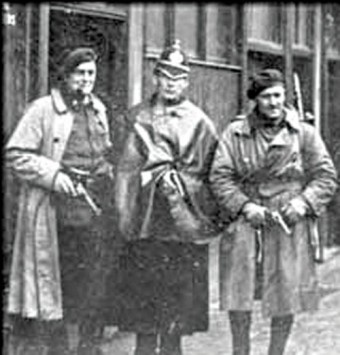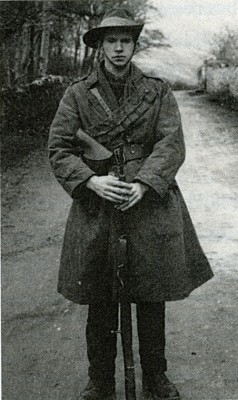Search Results for 'Irish War of Independence'
30 results found.
The Auxiliaries in Galway
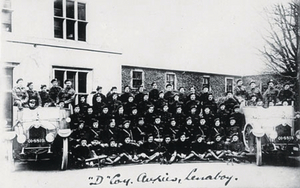
As the guerrilla war attacks by the Irish Volunteers on the RIC began to escalate in 1919, the British government recruited World War I veterans as a complementary force to the RIC. It advertised for men willing “to face a tough and dangerous task”. These were the Black and Tans. A further campaign was launched to recruit former army officers who were specifically formed into counter insurgency units known as the Auxiliaries or ‘The Auxies’. They wore distinctive ‘Tam O’Shanter’ caps. One of these units, D Company, was stationed in Lenaboy Castle and in ‘The Retreat’ in Salthill.
Eamonn Corbett and 1916
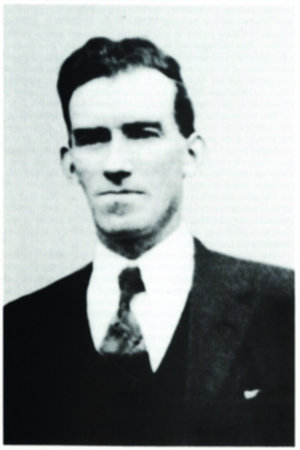
Eamonn Corbett came from Kileeneenbeg near Clarinbridge. He was associated with the Volunteer movement in County Galway from 1914 onwards. After the Redmondite split he gave valuable assistance in organising the Volunteers throughout the county, and in 1915 he was assisting Liam Mellows while training the various companies in the Brigade area.
‘No cheering crowds, no military parades, no public holidays’
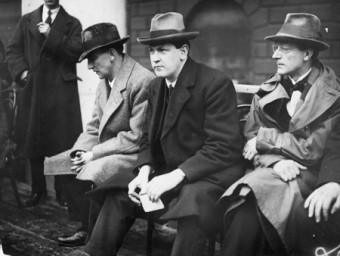
On December 7 1922, less than eight months after the Kilmilkin battle, Pádraic Ó Máille TD and his friend Sean Hales TD of Cork, walked out of a hotel on Ormonde Quay, by Dublin’s river Liffy. They just had lunch, and were on their way back to the Dáil in Leinster House, a short drive away. Ó Máille, Galway city and Connemara’s first TD, had been appointed Leas Ceann Comhairle (deputy speaker). As they reached their car a gunman stepped forward and opened fire. Both men were hit, but Hales was bleeding profusely. Although seriously injured Ó Máille managed to get Hales into the car and drove to the nearest hospital, where he collapsed. Hales was dead..
St Patrick's Day 1921 — murder and mayhem in Clifden
Just before 6am on St Patrick's Day 1921, Monsignor McAlpine, the Catholic parish priest of Clifden, Co Galway, was woken by loud banging on his door. “For God's sake, Canon, come down - the town is ablaze.”
A innocent man and the fate of Clifton
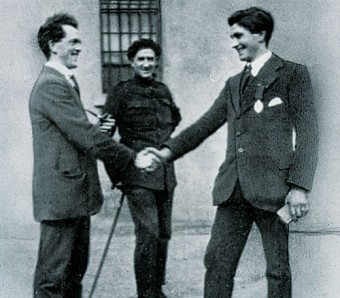
The murderous and vengeful events that followed 'Bloody Sunday' 1920 impacted on the town of Clifden in an unexpected way. There was shooting and murder on its streets; and, following a rampage by the Black and Tans, practically half the town was burnt down.
‘A long and dangerous night in Galway’
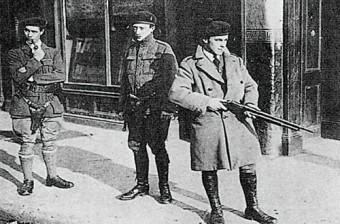
There was a fearful incident at Galway railway station on the evening September 8 1920. A larger crowd than usual waited for the Dublin train. The big story of the day was the Terrance McSweeney hunger strike in Brixton prison. The young Sinn Fein Lord Mayor of Cork was in his second month without food. The people of Ireland, and the Irish across the world, were totally focused on this drama. McSweeney died on October 25 after 74 days. The Dublin papers that evening would have had the latest health reports.
Burnings and panic follow Ballyturn ambush
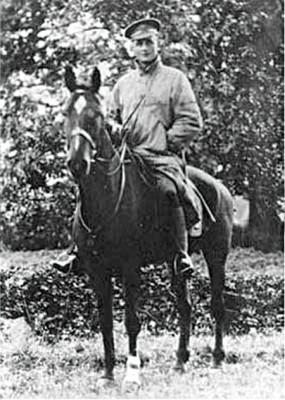
Following a tennis party at the home of Mr J C Bagot JP, of Ballyturn House, near Gort, on May 15 1921, the IRA scored a devastating blow against the British forces. The local District Inspector, Captain Cecil Blake, his lady companion Eliza Williams; two officers, Capt Cornwallis and Lieutenant McCreery were shot dead in an ambush as they drove away from the house. The IRA party, probably as many as ten men, had taken up position in the gate lodge, and in the surrounding bushes. One gate was closed. The car had to stop to open it. At that moment the IRA opened fire. There was one survivor, Margaret Gregory, the widowed daughter-in-law of Lady Gregory.
